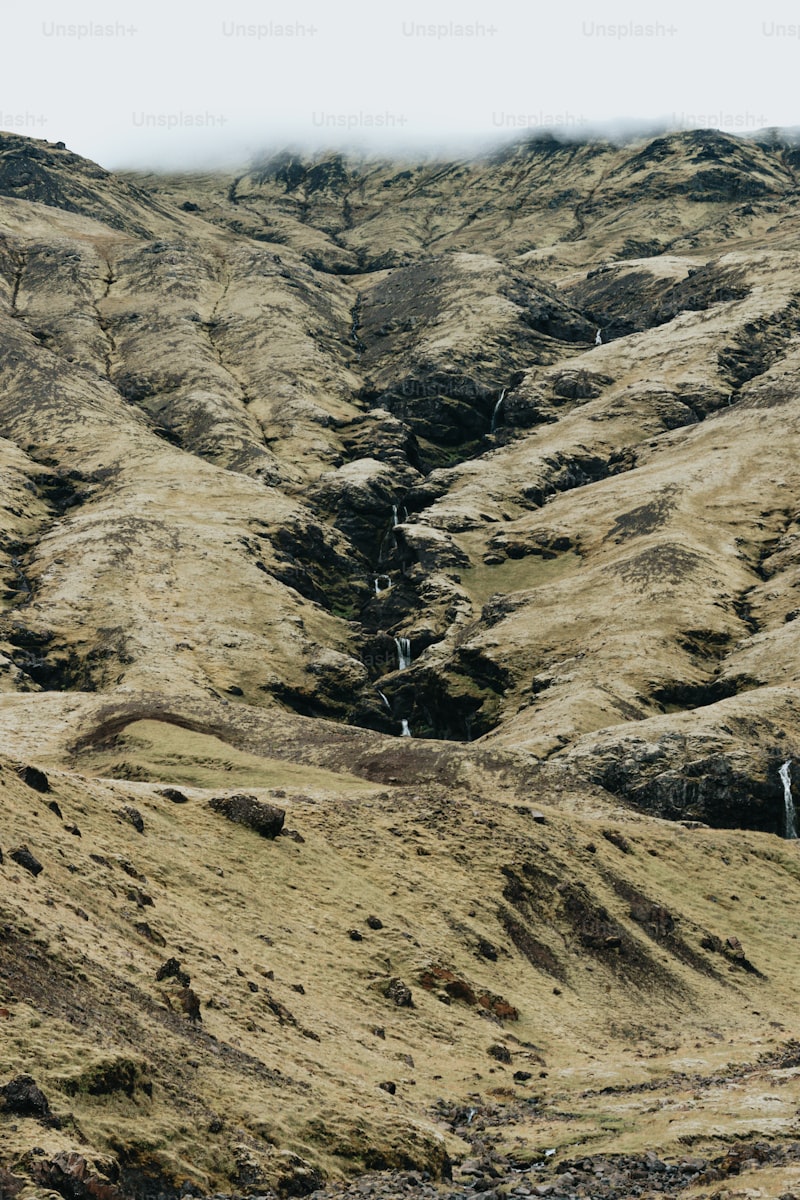Imagine standing atop a rugged cliff, gazing out at the vast expanse of the Grand Canyon. Millennia of erosion by the Colorado River have carved out this monumental chasm, revealing layers of rock that tell a story of Earth’s geological history. It’s a testament to the power of water, patiently wearing away solid stone over eons.
But water isn’t the only artist in nature’s gallery. Wind, too, plays its part, especially in deserts where it sculpts towering sand dunes that seem frozen in time. Each grain of sand, carried by the wind and deposited in its path, contributes to the ever-changing shapes of these dunes. It’s a dance of particles, choreographed by the whims of the breeze.
Volcanic activity adds another dimension to Earth’s landscapes, where molten rock shapes the land both violently and creatively. Lava flows can create new landmasses, as seen in the Hawaiian Islands, where islands emerge from the sea as fiery eruptions cool and solidify into solid rock. It’s a reminder that Earth is alive, its inner forces shaping the surface we inhabit.
Even the subtlest forces, like freezing and thawing cycles, leave their mark. In colder climates, water seeps into cracks in rocks, expanding when it freezes and gradually prying apart solid stone. Over time, this process can break apart mountains, creating valleys and cliffs that define rugged terrains.
Nature’s Sculptors: How Erosion Shapes Earth’s Majestic Landscapes
Have you ever wondered about the powerful forces that carve out the stunning landscapes we admire around the world? It’s not always the work of human hands or volcanic eruptions that shape the Earth’s majestic features. Often, it’s the subtle yet relentless process of erosion that acts as nature’s sculptor, chiseling away at rocks and soil over millennia.

Erosion, in its various forms, is a master artist that works tirelessly with wind, water, ice, and even gravity to create breathtaking natural wonders. Picture the graceful arches of Utah’s Arches National Park or the towering hoodoos of Bryce Canyon—these intricate formations owe their existence to erosion’s patient touch.
Water, perhaps the most persistent of erosion’s tools, carves out valleys and canyons as it flows downhill, carrying sediment and wearing away at rock surfaces. Over time, rivers etch their paths deeper into the earth, leaving behind meandering canyons like the Grand Canyon, a testament to the erosive power of water over millions of years.
Meanwhile, wind erosion sculpts landscapes in arid regions, where gusts of wind carrying abrasive particles gradually smooth and shape rocks into fantastical forms. The sandstone spires of Monument Valley or the surreal rock formations of Cappadocia stand as evidence of wind’s patient craftsmanship.

In colder climates, glaciers become nature’s chisels, carving deep fjords and valleys as they slowly advance and retreat over thousands of years. The Great Lakes of North America and the fjords of Norway bear witness to the profound influence of glacial erosion on shaping the Earth’s surface.
Even coastal erosion, driven by the relentless pounding of waves against cliffs and shorelines, creates dramatic sea stacks, cliffs, and caves that define coastal landscapes worldwide. The iconic white cliffs of Dover or the stunning sea arches along the coast of Malta are all products of this ongoing battle between land and sea.
Unveiling the Forces: A Closer Look at How Water and Wind Reshape Terrain
Ever wondered how landscapes change over time? The forces of nature, like water and wind, play a remarkable role in shaping our planet’s terrain. Let’s dive into the fascinating details of how these elements sculpt the Earth’s surface.
Water, in its various forms, is one of the most powerful agents of erosion. Rainfall, for instance, starts the process by pounding on rock and soil. Have you ever observed how a gentle stream can carve a path through solid rock over centuries? It’s a testament to the persistence of water in reshaping landscapes. Rivers, too, carry sediment downstream, depositing it in deltas or carving majestic canyons through sheer rock faces.
On the other hand, wind may seem less impactful than water, but over time, it can create astonishing features. Think about the vast dunes of the Sahara or the intricate formations in sandstone cliffs. Wind erosion occurs through abrasion, where particles carried by wind gradually wear down rock surfaces. In arid regions, this process can lead to the formation of unique landforms that seem almost alien.
Interestingly, both water and wind erosion interact in complex ways. Picture a coastal landscape where waves continually batter cliffs, while wind carries and deposits sand further inland. The result? Dramatic coastlines dotted with sea stacks and sandy beaches sculpted over millennia.
These forces of nature not only shape the land but also influence ecosystems and human activities. Coastal erosion threatens communities, while fertile river valleys have been cradles of civilizations throughout history.
Next time you marvel at a canyon or feel the breeze on a sandy beach, remember the dynamic forces of water and wind that have tirelessly molded our planet’s terrain. It’s a reminder of nature’s resilience and its ongoing transformation of the world around us.
From Mountains to Valleys: The Ongoing Dance of Tectonics and Topography
Imagine standing at the edge of a majestic canyon, marveling at the layers of rock that tell stories of millions of years. This geological wonderland is not just a static painting but a dynamic stage where tectonic plates perform a slow, relentless ballet.
Tectonics, the study of the Earth’s crustal movements, reveals a narrative of colliding plates, sliding faults, and uplifting mountains. When tectonic plates collide, immense forces push rock upwards, giving birth to mighty mountain ranges like the Andes or the Alps. These geological giants rise as if in a symphony, their peaks reaching for the sky.
But the drama doesn’t end there. As mountains rise, erosion begins its patient work, sculpting peaks into jagged spires and transforming cliffs into gentle slopes. Rivers, like artists with their brushes, carve deep canyons through the hardened rock, revealing layers that chronicle the Earth’s history.

In the valleys below, the story takes a different turn. Here, tectonic movements often create basins where sediments settle, forming fertile plains and lush habitats. Valleys are the cradles of life, where rivers meander through verdant landscapes, nurturing ecosystems that thrive in the embrace of geological processes.
The ongoing dance of tectonics and topography is not just a spectacle of raw power but a testament to the Earth’s resilience and creativity. It’s a reminder that our planet is alive, constantly reshaping itself in response to forces far beyond our control.
Next time you gaze at a mountain range or wander through a tranquil valley, remember that you’re witnessing more than just scenery. You’re witnessing the eternal ballet of tectonics and topography, a spectacle that continues to shape the world we call home.
Time’s Touch: Ancient Trees and the Evolution of Forest Landscapes
Imagine walking through a forest where the sun’s rays filter through the canopy, casting dappled light on moss-covered rocks and fern-laden paths. Each step echoes with history, as these ancient trees have witnessed civilizations rise and fall, yet they remain rooted in the earth, steadfast and unwavering.
These arboreal elders not only provide sanctuary for countless species but also play a vital role in maintaining ecological balance. Their expansive root systems intertwine with the soil, creating a network that supports diverse flora and fauna. Birds nest in their branches, small mammals scurry along their trunks, and fungi flourish in the shelter of their shade.
As seasons change and years pass, these ancient trees continue to grow, their rings marking the passage of each annual cycle. They serve as living archives of environmental history, their growth patterns reflecting fluctuations in climate and ecological dynamics. From droughts to floods, they endure nature’s trials, adapting and evolving over millennia.
In the evolution of forest landscapes, these ancient trees are not just bystanders but active participants. Their presence shapes microclimates, influences soil composition, and contributes to the overall biodiversity of their surroundings. They are pillars of resilience, embodying the interconnectedness of life within ecosystems.
Standing beneath the canopy of an ancient forest, one cannot help but feel a sense of awe and reverence for these living monuments. They are reminders of our planet’s intricate tapestry of life, where every tree, from sapling to elder, plays a crucial role in sustaining the delicate balance of nature.
In essence, the story of “Time’s Touch: Ancient Trees and the Evolution of Forest Landscapes” is a testament to the enduring legacy of these remarkable beings. They bridge the past with the present, offering insights into ecological processes that shape our natural world. As we strive to conserve and protect these ancient forests, we also preserve the invaluable lessons they teach us about resilience, adaptation, and the interconnectedness of all life on Earth.
Frequently Asked Questions
What are natural processes that shape landscapes?
Learn about the natural processes responsible for shaping landscapes, including erosion, weathering, deposition, and tectonic activity. Discover how these processes interact to create diverse landforms around the world.
What role do glaciers play in shaping landforms?
Learn how glaciers shape landforms through erosion, deposition, and the formation of distinctive features like valleys, fjords, and moraines.
How does weathering and erosion change landscapes?
Weathering and erosion alter landscapes by breaking down rocks and transporting the resulting sediment. Weathering weakens rocks through physical, chemical, or biological processes. Erosion moves the loosened material, shaping terrain over time through wind, water, or ice.
Why are volcanic activities significant in landscape evolution?
Volcanic activities significantly impact landscape evolution through processes such as lava deposition, formation of new landforms like volcanic mountains and islands, and alteration of soil fertility. These events reshape the Earth’s surface over time, contributing to geological diversity and influencing ecosystems.
How do rivers influence landscape formation?
Learn how rivers shape landscapes through erosion, deposition, and the creation of distinctive landforms like valleys and deltas. Understand the significant role of water flow and sediment transport in sculpting Earth’s surface.


